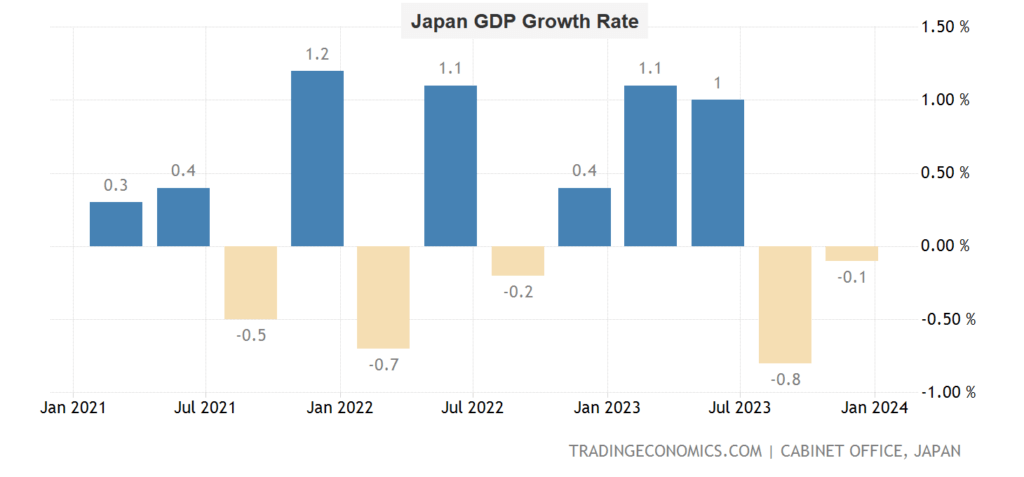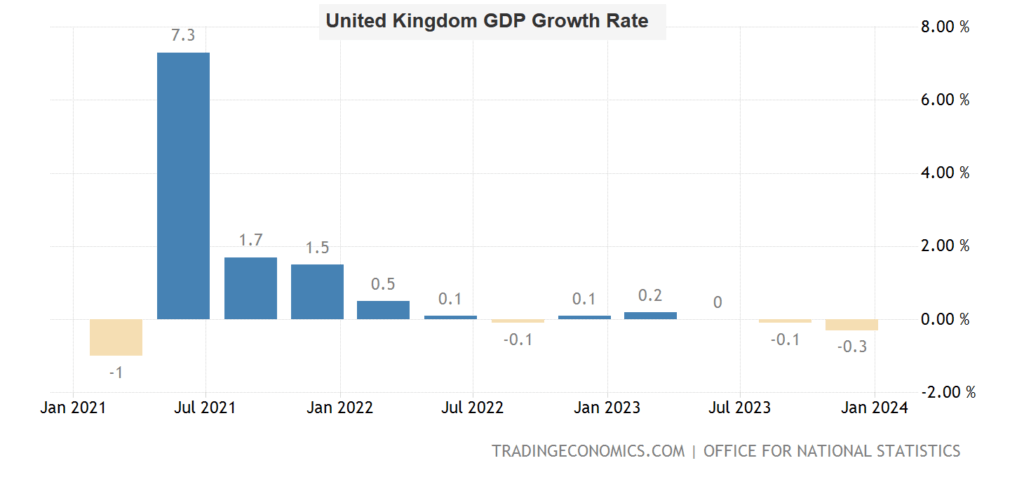The global economic landscape has been marked by significant challenges in recent times, with several major economies experiencing either recession or stagnation. This phenomenon warrants careful examination to understand the underlying causes and potential implications for the broader global economy.
Economies in Recession
Japan, one of the largest economies in the world, has slipped into a recession, characterized by consecutive quarters of negative GDP growth. Factors contributing to this decline include a slowdown in consumer and business spending. Similarly, the United Kingdom and Denmark have also experienced contractions in economic output over multiple quarters, driven by various factors such as declines in industrial production and manufacturing.


Moldova, a European country, has witnessed a similar downturn in its economy, further highlighting the widespread nature of the recessionary pressures affecting different regions. These trends underscore the interconnectedness of the global economy, where economic challenges in one region can have ripple effects across borders.
Economies in Stagnation
Beyond recession, several economies have faced stagnation, with minimal GDP growth over consecutive quarters. The Euro Area, comprising a significant portion of global GDP, has struggled to achieve meaningful growth, hampered by higher interest rates impacting consumer and business demand. Germany, the largest economy within the Euro Area, has entered a technical recession, reflecting broader challenges within the region.
Canada, Sweden, and Saudi Arabia are among the countries experiencing economic stagnation, with various factors such as inflation, interest rates, and oil prices influencing their growth trajectories. These economies face the dual challenge of stimulating growth while navigating external economic pressures and domestic policy constraints.
Global Implications and Responses
Collectively, economies experiencing recession or stagnation account for a substantial portion of the global economy, underscoring the severity of the current economic challenges. Higher inflation and interest rates, coupled with weaker consumer and business demand, have contributed to this concerning trend.
To address these issues, central banks and governments have begun implementing stimulative measures, including lowering interest rates and increasing budget deficits. However, the effectiveness of these policies may be limited by factors such as policy lag and external economic conditions.
Furthermore, the slowdown in China, the second-largest economy globally, adds another layer of complexity to the current economic landscape. Deflationary pressures in China raise concerns about the broader implications for global growth and stability, reminiscent of the challenges faced during the Great Financial Crisis.
Conclusion
In conclusion, the prevalence of recession and stagnation in major economies highlights the interconnected nature of the global economy and the need for coordinated policy responses. Addressing these challenges requires a multifaceted approach that considers both domestic and international factors. As economies strive to navigate these turbulent times, proactive measures and collaborative efforts will be essential to fostering sustainable growth and stability in the global economy.